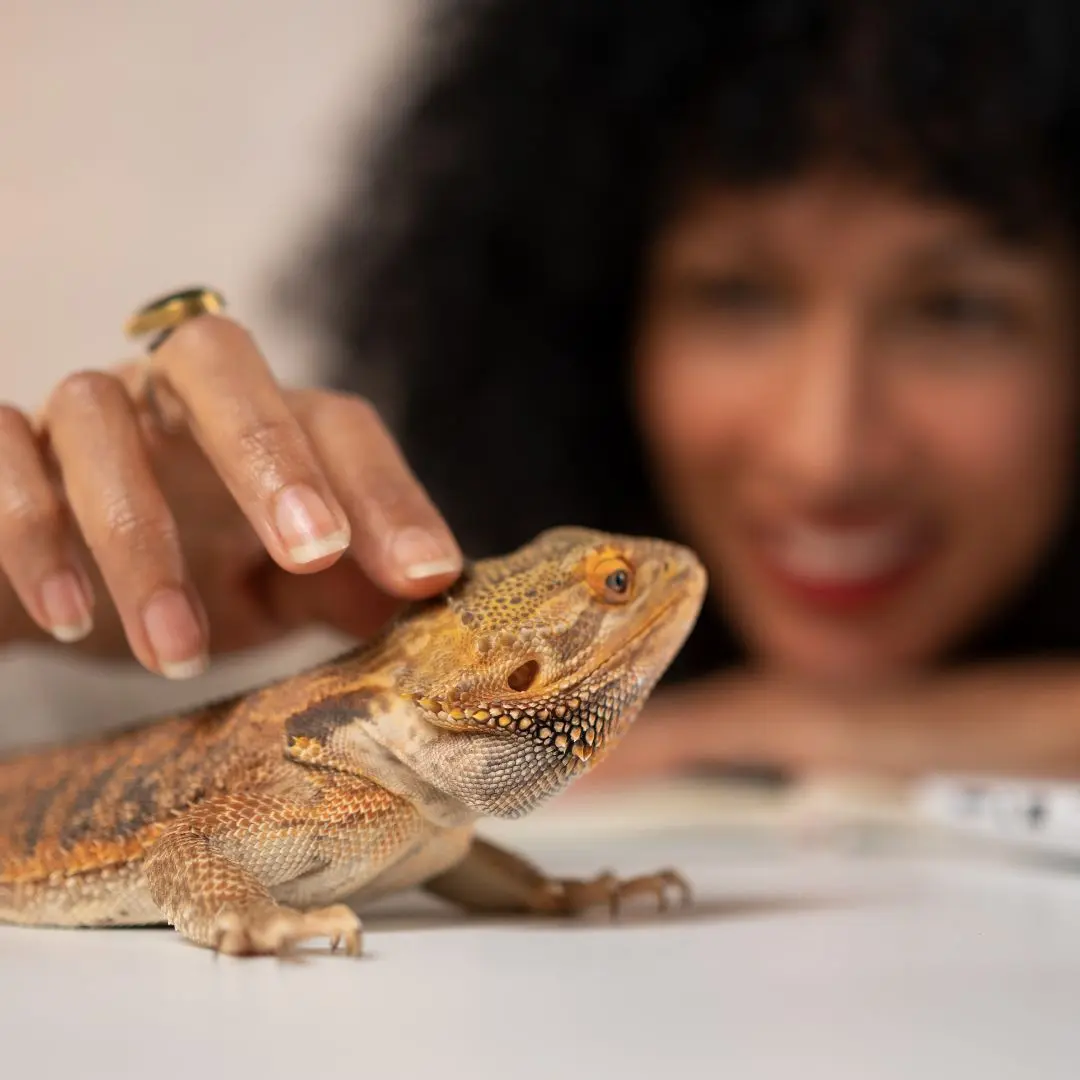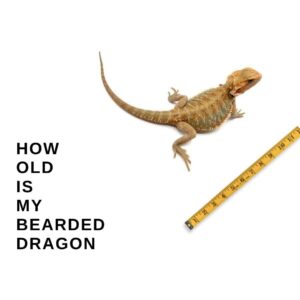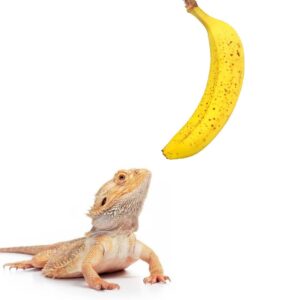Bearded dragons, scientifically known as Pogona, are native to the arid regions of Australia. They are named after the “beard” of spiky scales they display when threatened or during courtship displays.
These reptiles are known for their docile and friendly nature, making them great companions for reptile enthusiasts.
Table of Contents
Origin and Natural Habitat
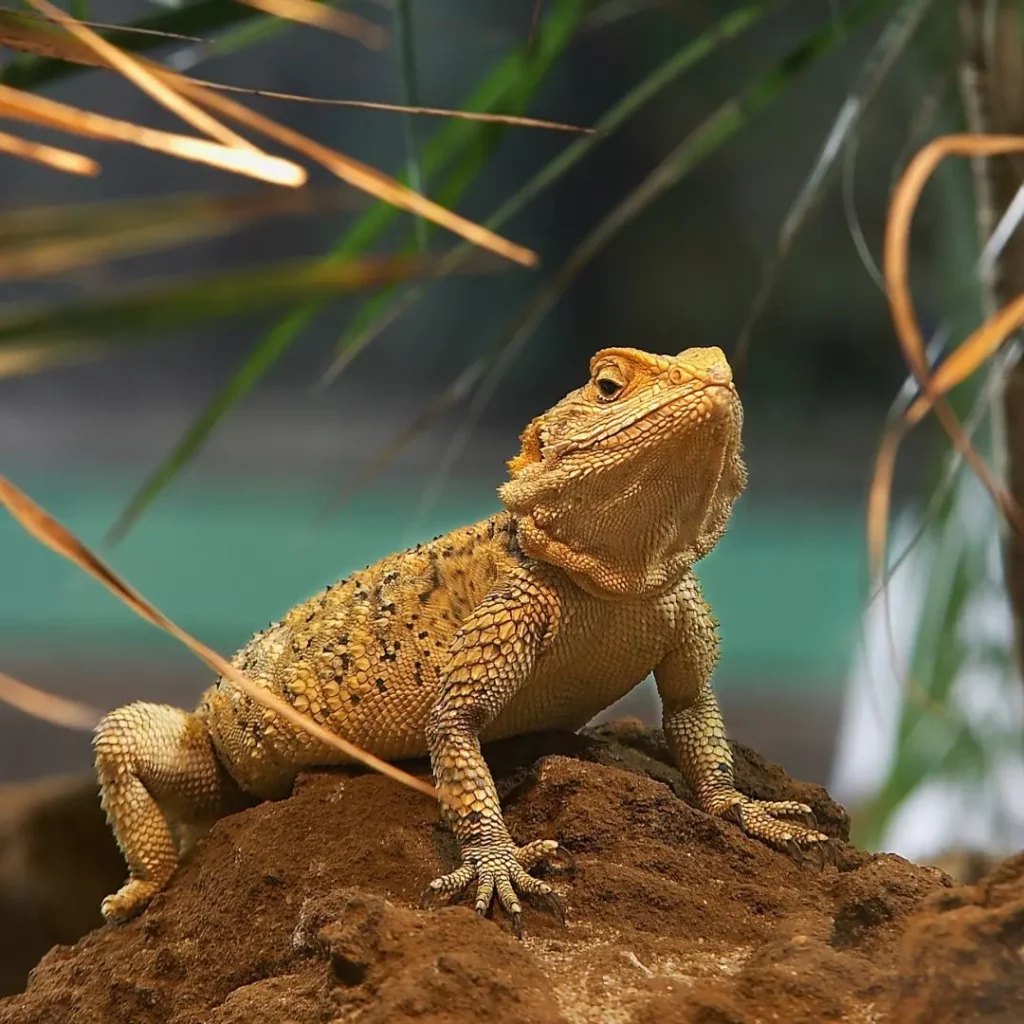
The bearded dragon’s natural habitat primarily spans the arid regions of Australia, including deserts, woodlands, and dry grasslands.
They have adapted to survive in harsh environments and are known for their ability to regulate body temperature by basking in the sun and seeking shade when necessary. This ability to thermoregulate is crucial to their survival.
Physical Characteristics
Bearded dragons have a unique appearance that sets them apart from other reptiles.
They typically have a broad, triangular-shaped head and a stout body covered in rough scales.
One of their most distinctive features is the row of spiky scales under their chin, which can be puffed out to form their iconic “beard” when they feel threatened or territorial.
These reptiles come in various colors and patterns (morphs), ranging from shades of brown and tan to bright oranges and reds. Some individuals even have patterns or spots on their scales, giving them a truly unique and striking appearance.
Lifespan and Growth
The lifespan of a bearded dragon in captivity can vary depending on factors such as diet, environment, and overall care. On average, they can live anywhere from 10 to 15 years, but with proper care, some individuals have lived well into their twenties.
Bearded dragons go through different stages of growth. As hatchlings, they are tiny and delicate, measuring just a few inches in length.
However, they can grow rapidly with proper care and a nutritious diet. By reaching adulthood, they typically measure around 18 to 24 inches from head to tail.
Bearded Dragon Behavior and Temperament
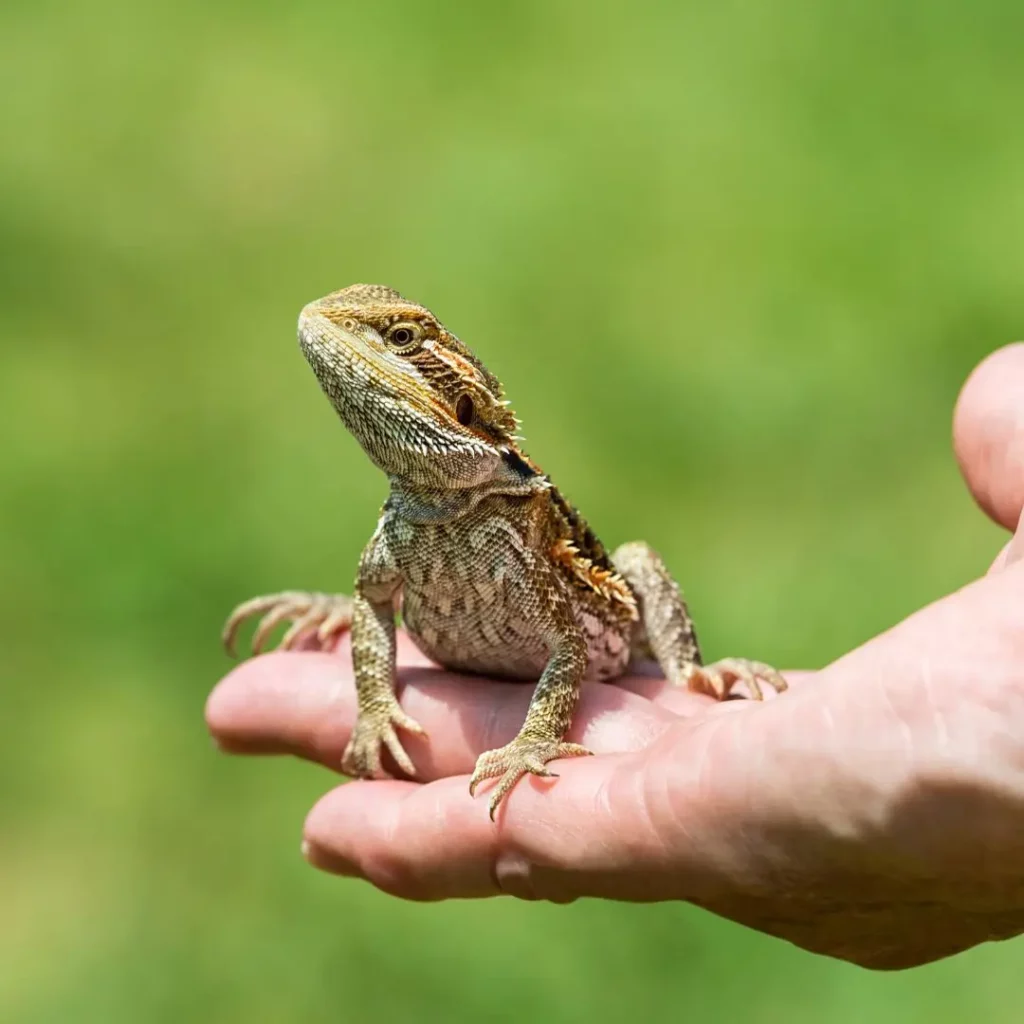
Bearded dragons are highly intelligent but generally solitary creatures in the wild, only coming together during breeding season or temporary interactions.
However, they can develop social bonds with their owners and even other household pets when kept as pets. They enjoy human interaction and can become accustomed to being handled with proper care and gentle handling.
Mating and Breeding Habits
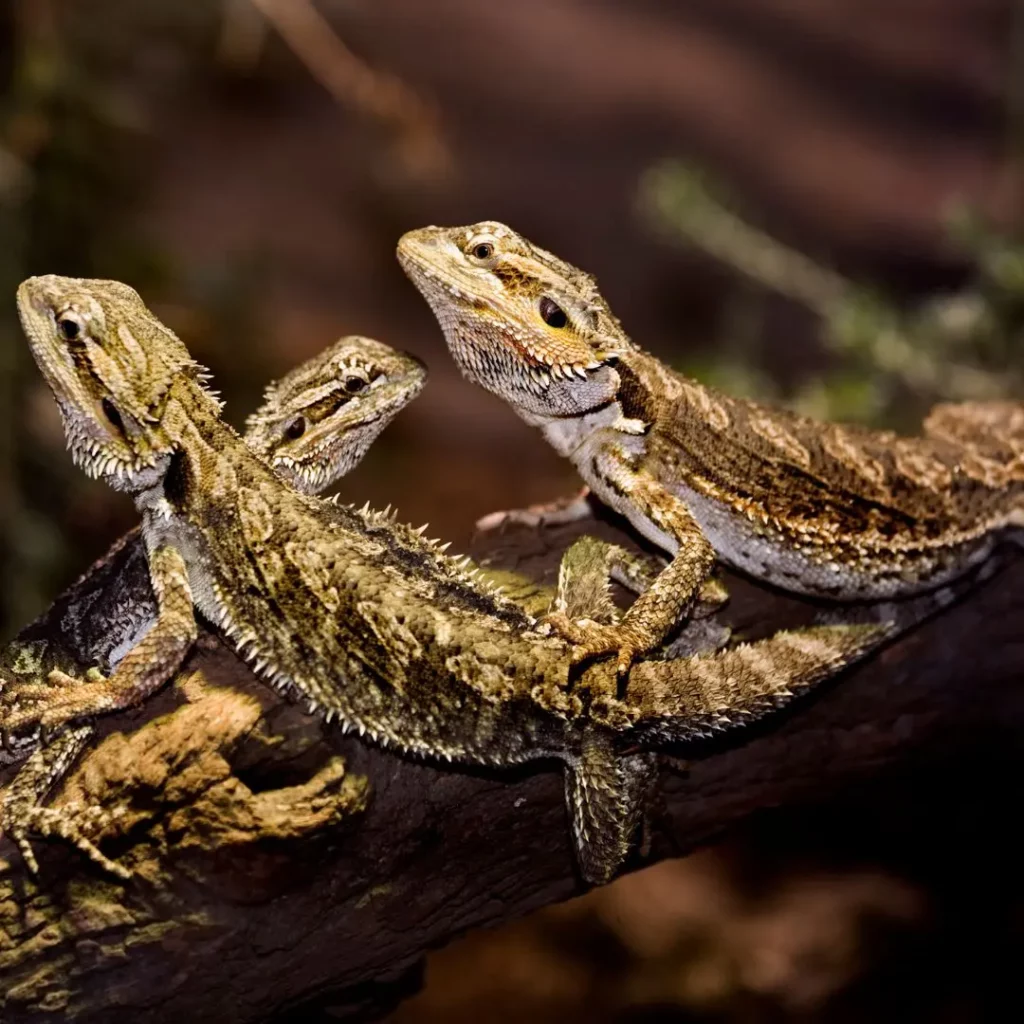
During the breeding season, bearded dragons display interesting mating behaviors. Male dragons bob their heads, inflate their beards, and perform a series of head movements to attract females.
Females, on the other hand, may wave their arms or flatten their bodies to indicate their receptiveness. Successful mating can result in the female laying a clutch of eggs, which typically hatch after an incubation period of around two months.
Communication and Body Language
Although bearded dragons do not have vocal cords, they communicate through various body language signals.
Puffing out their beards, for example, is a sign of aggression or defense.
They may also darken their colors or adopt specific body postures to communicate their mood or intentions.
Caring for a Bearded Dragon
Providing the right care is essential for the health and well-being of your bearded dragon. Let’s delve into the key aspects of caring for these fascinating reptiles.
Housing and Environment
Creating a suitable habitat for your bearded dragon starts with providing a spacious enclosure that mimics their natural environment.
A large glass terrarium with proper ventilation, humidity, and heating sources is ideal.
Inside the enclosure, you will need to include a temperature gradient, a basking spot, and a hiding area.
Additionally, bearded dragons require UVB lighting to meet their vitamin D needs.
Diet and Nutrition
Bearded dragons are omnivores, meaning they eat a varied diet consisting of both insects and plant matter.
As hatchlings, they eat small insects such as crickets and mealworms. However, their diet shifts to include more plant-based foods like leafy greens, vegetables, and fruits as they grow.
Proper supplementation of essential nutrients is also crucial to ensure their overall health and development.
Health and Wellness
Regular health check-ups ensure your bearded dragon remains happy and healthy.
Keep an eye out for any signs of illness, such as changes in appetite, lethargy, stress marks, or abnormal behavior. It’s also essential to maintain proper hygiene in their enclosure and provide regular exercise and mental stimulation opportunities.
Bearded Dragon as a Pet
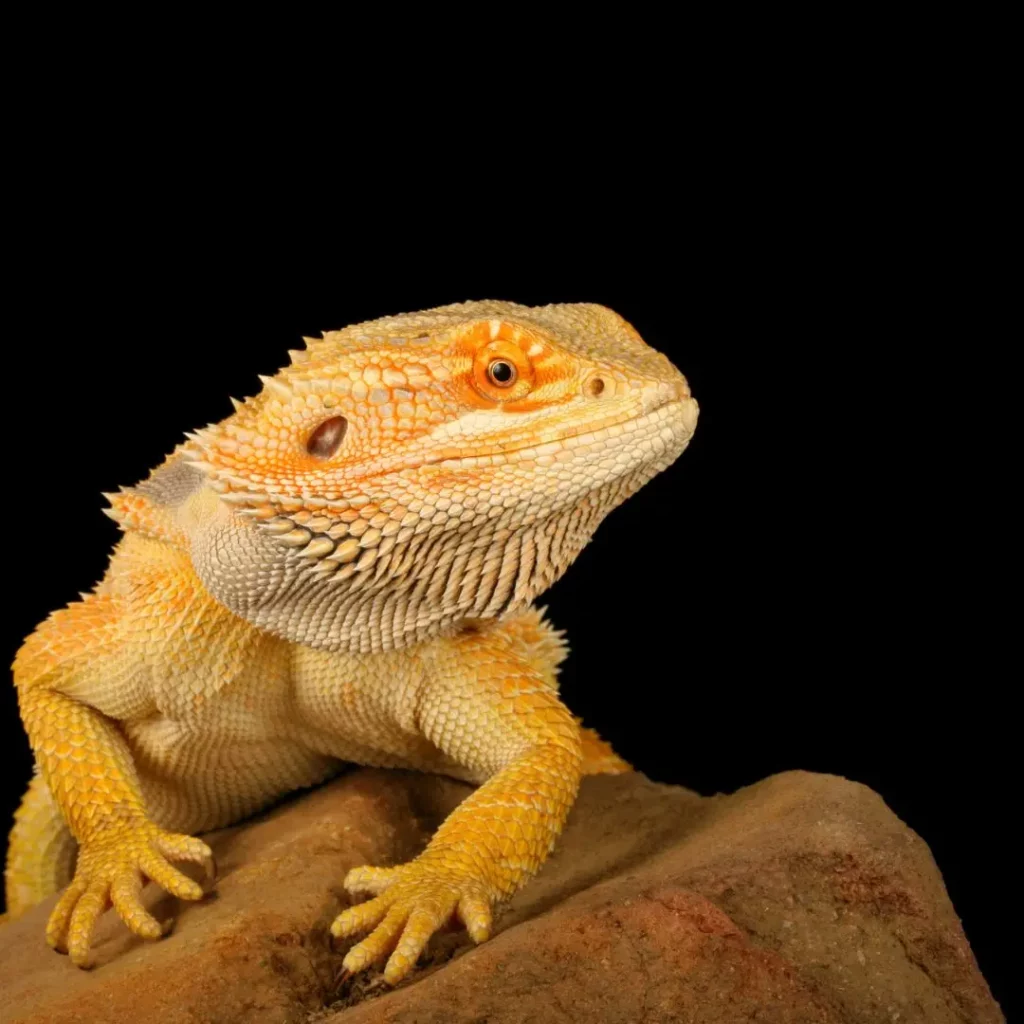
Considering a bearded dragon as a pet comes with its own set of advantages and considerations. Let’s weigh both the pros and cons and explore some legal aspects to keep in mind when considering these reptiles as pets.
Pros and Cons
One of the main advantages of owning a bearded dragon is their docile nature and relatively low maintenance requirements compared to other pet reptiles.
They can make excellent companions and are great for reptile enthusiasts of all experience levels.
However, it’s important to consider factors such as their long lifespan, space requirements, and potential health issues that may arise.
Legal Considerations
Before bringing a bearded dragon into your home, research and comply with any legal requirements for owning them as pets.
Specific permits or licenses may be necessary in some areas, and certain species may be restricted due to conservation concerns. Familiarize yourself with the local regulations to ensure you comply.
Adoption could be the perfect solution.
Choosing the Right Bearded Dragon
If you’ve decided to add a bearded dragon to your family, choosing the right individual is just the first step.
Consider factors such as age, health, and temperament when selecting a bearded dragon from a reputable breeder or rescue organization.
Take your time interacting with them and ensuring compatibility before making your final decision.
Understanding, caring for, and owning a bearded dragon can be an incredibly rewarding experience. There is much to consider, from learning about their origins and physical characteristics to providing suitable housing and nutrition.
Following proper care guidelines and being mindful of their unique behaviors, you can build a strong bond with your bearded dragon and provide them with a happy and fulfilling life as your reptilian companion.
My Senior Paws is a participant in the Amazon Services LLC Associates Program, an affiliate advertising program designed to provide a means for sites to earn advertising fees by advertising and linking to Amazon.com. We also participate in other affiliate programs which compensate us for referring traffic.
